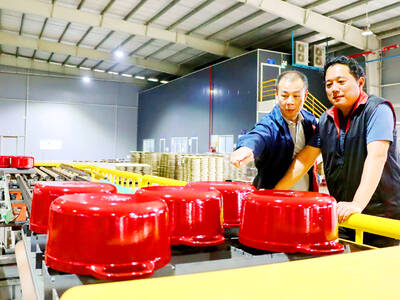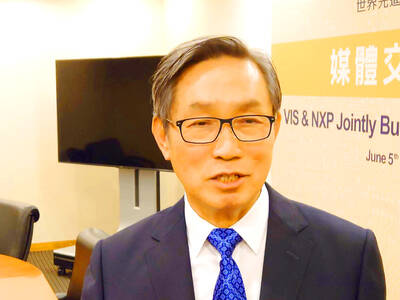When Singapore pulls the plug on its second-generation (2G) mobile phone network this year, thousands of people could be stuck without a signal — digital have-nots left behind by the relentless march of technology.
From technophobic pensioners to cash-strapped migrant workers, about 140,000 people in highly wired Singapore still use the city-state’s 2G network and cheap, robust handsets.
First rolled out in 1994 — when playing Snake was the pinnacle of mobile entertainment — 2G has long been superseded technologically, with new gold standard 5G offering lightning fast connectivity for a generation used to streaming movies and TV directly to mobile phones.
Singapore, which has one of the world’s highest rates of smartphone penetration, plans to turn off 2G in April to reallocate scarce radio frequency spectrum and meet surging consumer demand for high-speed data.
“It makes sense for a market like Singapore, as operators need more capacity for data services,” said Charles Moon, an analyst with information technology research firm Ovum Ltd.
Japan, South Korea and US telecom giant AT&T Inc have already shut down their 2G networks and Australia is scheduled to stop the service in September.
Singapore recently banned the sale of 2G-only mobile phones and new prepaid SIM cards no longer work on 2G handsets.
However, globally, 2G is not set to vanish, even as the number of smartphones is projected to soar from 4 billion last year to about 6 billion by 2020, according to IHS Markit data.
By 2021, 2G will still account for about 11 percent of total mobile subscriptions worldwide — mostly in Africa and Latin America, Moon said.
“Affordability is the major factor driving continued use,” he said, adding that the longer battery life and durability of 2G handsets was also important.
In wealthy Singapore, those most affected by the shift are likely to be the city’s migrant worker population, who rely on cheap 2G phones to stay in touch with family back home.
“This is really their connection to the rest of the world,” said Debbie Fordyce of migrant worker welfare group Transient Workers Count Too, which is asking the public to donate old 3G phones to help affected workers.
Bangladeshi construction worker Roshid Mamunun said his three-year-old Nokia handset was all he could afford.
“I can talk my family, I can call them, if I need help, I can contact people,” he said.
Sahadat, 26, another Bangladeshi worker, who goes by one name, said he was worried he would not be able to afford a 3G phone to make his daily call to hear his one-year-old son say “Papa.”
The cheapest 3G-enabled phones range from S$35 to S$99 (US$25 to US$70) in local phone shops.
Normal voice calls and text messages on 2G and 3G networks cost the same.
For other devotees of 2G, it is the simplicity of the solid, old handsets that is the main selling point, and 80-year-old retiree Tan Ah Phong said he is dreading the April deadline.
“We only need phones to make calls,” he said. “Just looking at the number of functions on a lot of phones nowadays gives me a headache.”
Lee Soo Eng, 86, said her daughter gave her a touchscreen smartphone two months ago, but she regrets giving up her 2G device.
“At this age, my memory is not good, so I keep forgetting how to unlock it or use it to call,” she said.
“When I need to contact anybody, I will just use a public payphone,” she said.

STEEP DECLINE: Yesterday’s drop was the third-steepest in its history, the steepest being Monday’s drop in the wake of the tariff announcement on Wednesday last week Taiwanese stocks continued their heavy sell-off yesterday, as concerns over US tariffs and unwinding of leveraged bets weighed on the market. The benchmark TAIEX plunged 1,068.19 points, or 5.79 percent, to 17,391.76, notching the biggest drop among Asian peers as it hit a 15-month low. The decline came even after the government on late Tuesday authorized the NT$500 billion (US$15.2 billion) National Stabilization Fund (國安基金) to step in to buoy the market amid investors’ worries over tariffs imposed by US President Donald Trump. Yesterday’s decline was the third-steepest in its history, trailing only the declines of 2,065.87 points on Monday and

TAKING STOCK: A Taiwanese cookware firm in Vietnam urged customers to assess inventory or place orders early so shipments can reach the US while tariffs are paused Taiwanese businesses in Vietnam are exploring alternatives after the White House imposed a 46 percent import duty on Vietnamese goods, following US President Donald Trump’s announcement of “reciprocal” tariffs on the US’ trading partners. Lo Shih-liang (羅世良), chairman of Brico Industry Co (裕茂工業), a Taiwanese company that manufactures cast iron cookware and stove components in Vietnam, said that more than 40 percent of his business was tied to the US market, describing the constant US policy shifts as an emotional roller coaster. “I work during the day and stay up all night watching the news. I’ve been following US news until 3am

Six years ago, LVMH’s billionaire CEO Bernard Arnault and US President Donald Trump cut the blue ribbon on a factory in rural Texas that would make designer handbags for Louis Vuitton, one of the world’s best-known luxury brands. However, since the high-profile opening, the factory has faced a host of problems limiting production, 11 former Louis Vuitton employees said. The site has consistently ranked among the worst-performing for Louis Vuitton globally, “significantly” underperforming other facilities, said three former Louis Vuitton workers and a senior industry source, who cited internal rankings shared with staff. The plant’s problems — which have not

TARIFF CONCERNS: The chipmaker cited global uncertainty from US tariffs and a weakening economic outlook, but said its Singapore expansion remains on track Vanguard International Semiconductor Corp (世界先進), a foundry service provider specializing in producing power management and display driver chips, yesterday withdrew its full-year revenue projection of moderate growth for this year, as escalating US tariff tensions raised uncertainty and concern about a potential economic recession. The Hsinchu-based chipmaker in February said revenues this year would grow mildly from last year based on improving supply chain inventory levels and market demand. At the time, it also anticipated gradual quarter revenue growth. However, the US’ sweeping tariff policy has upended the industry’s supply chains and weakened economic prospects for the world economy, it said. “Now